Fibromyalgia
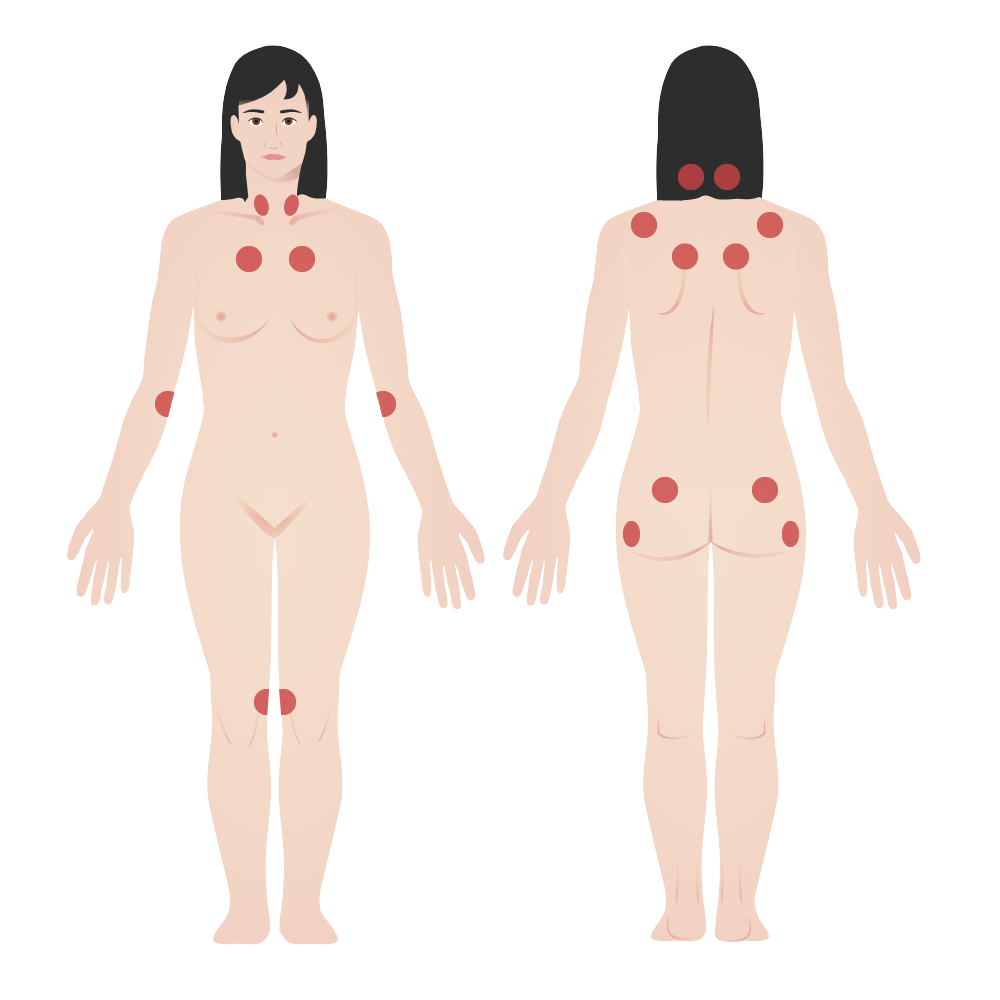
Overview Epidemiology Etiology While the cause is unknown, the following environmental triggers have been associated with the onset of fibromyalgia. Pathophysiology Clinical Presentation Diagnosis History and physical exam Fibromyalgia is a chronic syndrome; therefore, diagnosis determination is recommended over multiple visits after sequential observation and physical exams. A history evaluation should include: A physical examination […]
Anterior Cord Syndrome
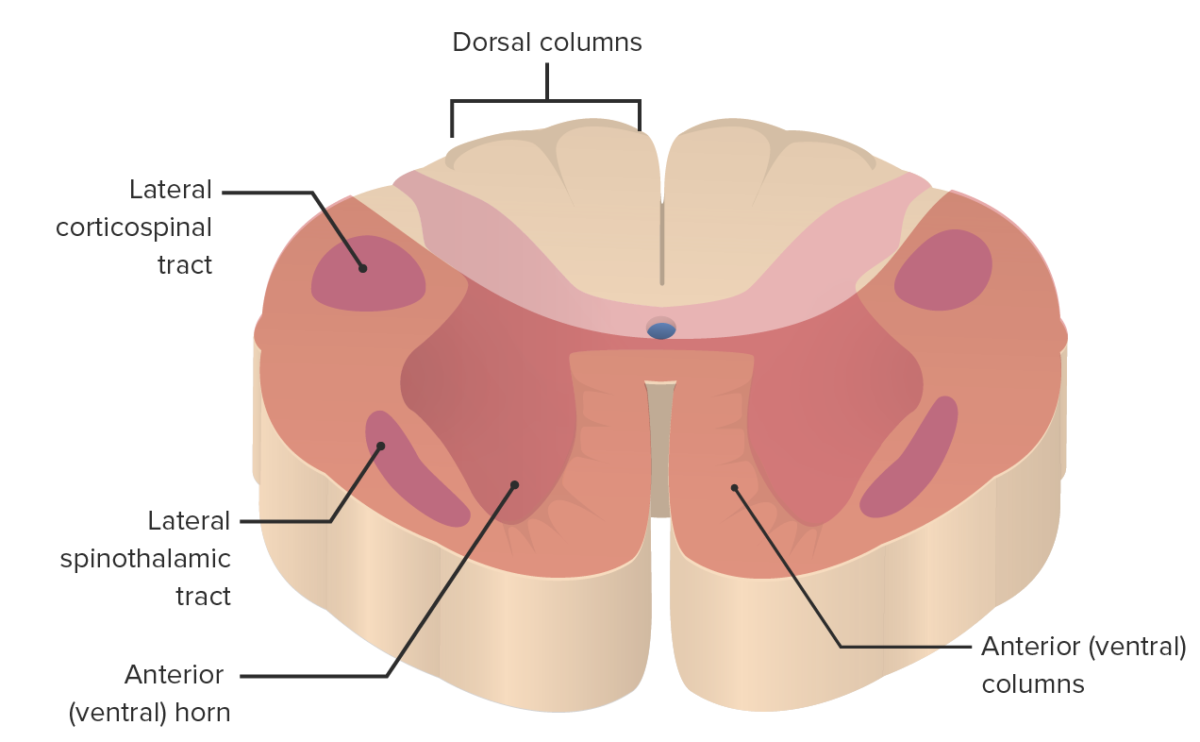
Overview Definition Anterior cord syndrome (ACS) is an incomplete cord syndrome affecting the anterior ⅔ of the spinal cord while sparing the dorsal columns, resulting in loss of motor and sensory function below the level of injury. Epidemiology Etiology Pathophysiology Anterior cord syndrome starts with occlusion of the blood supply or injury to the vertebral […]
Central Cord Syndrome
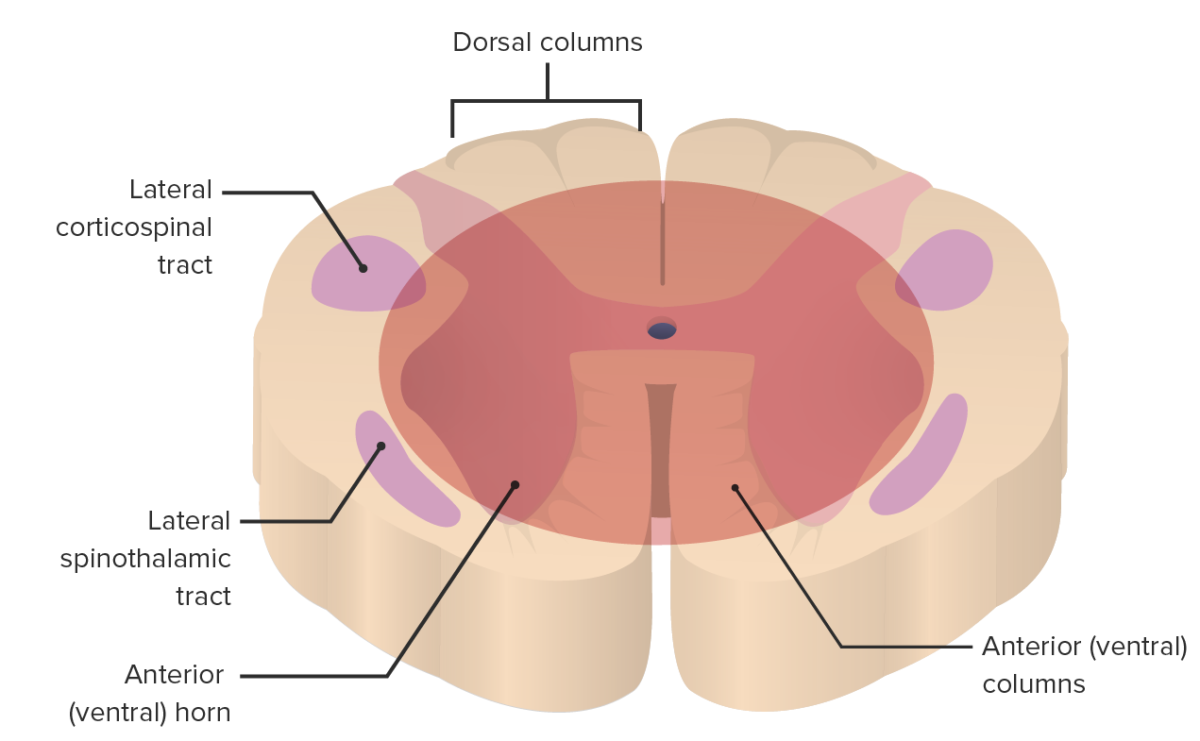
Overview Definition Central cord syndrome (CCS) is a neurological syndrome caused by an injury to the center of the spinal cord, affecting the spinothalamic tracts ((STTs) sensory) and medial aspect of the corticospinal tracts ((CSTs) motor). Epidemiology Etiology Pathophysiology Injury to the vertebral column causes a spinal cord injury related to the force and direction […]
Amyotrophic Lateral Sclerosis
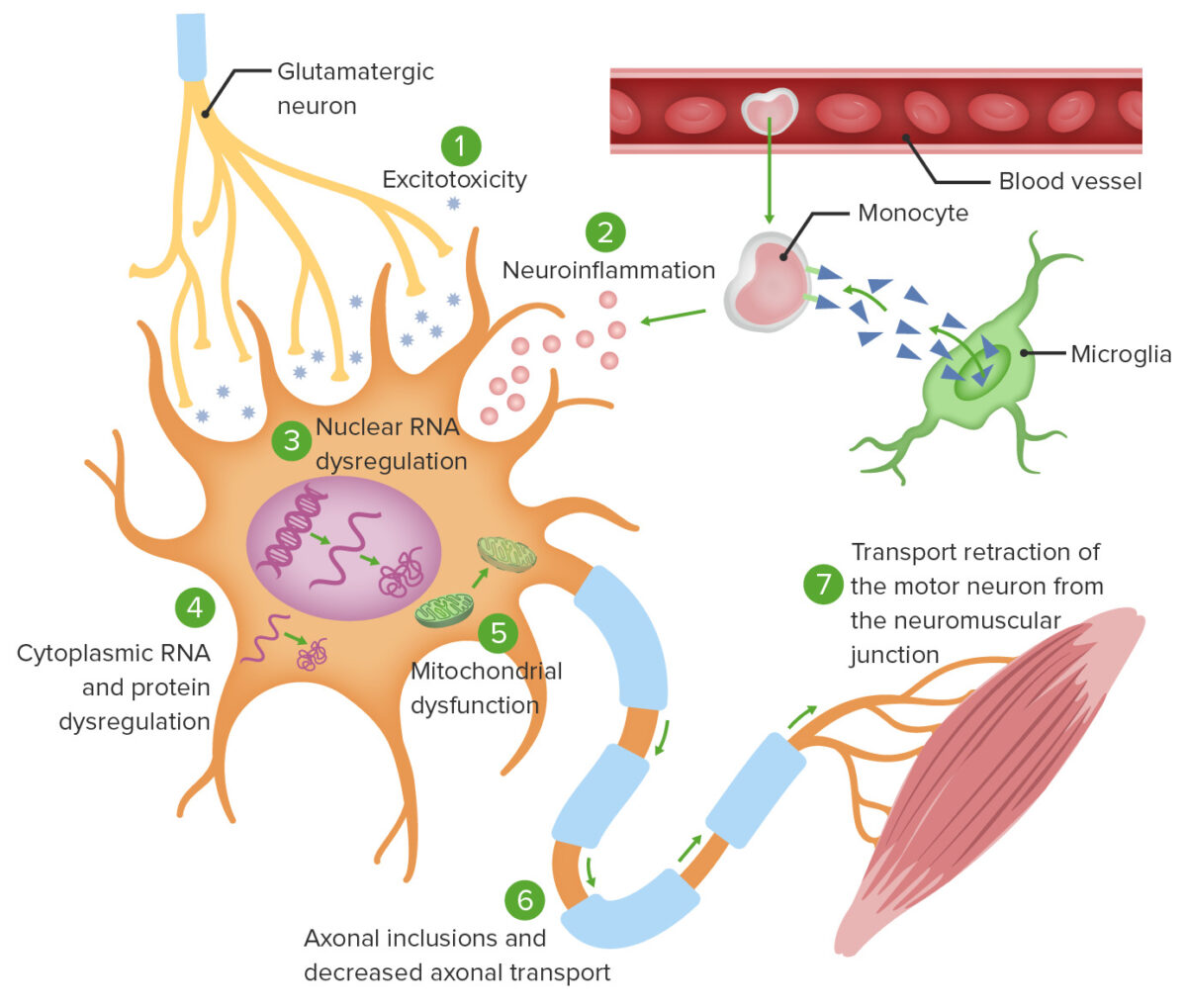
Overview Definition Classification Epidemiology Risk factors Etiology The cause of sporadic ALS is unknown. However, there are multiple contributing factors: Pathophysiology The exact pathogenic mechanism of ALS is unknown. There appear to be both molecular and genetic pathways that combine to cause UMN and LMN apoptosis. Clinical Presentation History Physical examination During the usual natural […]
Urinary Incontinence

Overview Definition Urinary incontinence is loss of bladder control, leading to involuntary loss of urine or uncontrolled urine leakage, which presents a hygienic or social problem to the individual and impacts quality of life. Epidemiology Etiology and risk factors Consequences of urinary incontinence Pathophysiology Normal bladder function Incontinence pathophysiology Clinical Presentation General approach Focus the […]
Benign Bone Tumors
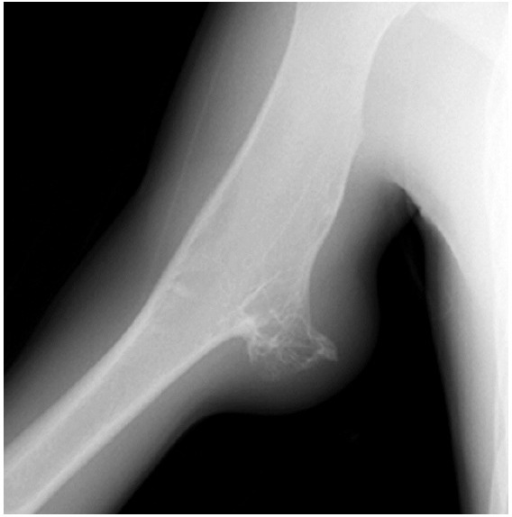
Overview Osteoid osteomas and osteoblastomas are bone-forming lesions found in children; osteomas can also be seen in adults. Osteochondromas are cartilage-forming tumors. Giant-cell tumors are osteolytic. Fibromas and bone cysts are other benign bone lesions. Characteristics of benign bone tumors Epidemiology Staging and classification Osteoid Osteoma (in Children) Description Epidemiology Clinical features Diagnosis Management Osteoma […]
Spinal Stenosis
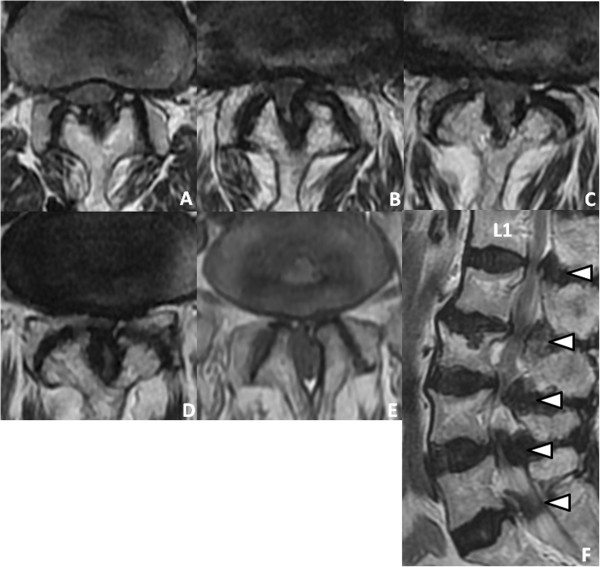
Overview Definition Epidemiology Etiology Pathophysiology Clinical Presentation Diagnosis and Management Diagnosis Management The goal of spinal stenosis management is to reduce symptoms and increase the individual’s functional status. Conservative management: Surgery: Differential Diagnosis References
Normal Pressure Hydrocephalus
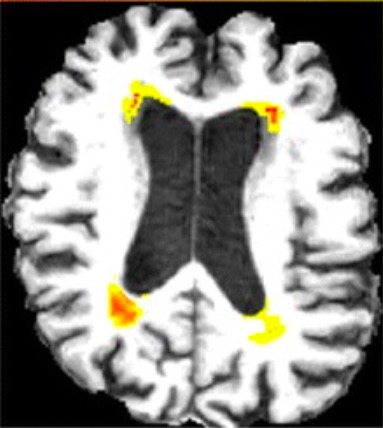
Overview Definition Normal pressure hydrocephalus (NPH) is a neurodegenerative disorder characterized by the triad of dementia, progressive gait abnormalities, and urinary urgency or incontinence. Epidemiology Most common form of hydrocephalus in adults Incidence: 2–20 cases per million individuals per year Prevalence: Secondary NPH: Prevalence is not determined by age. Idiopathic NPH: Prevalence increases with age […]
Thin Basement Membrane Nephropathy (TBMN)
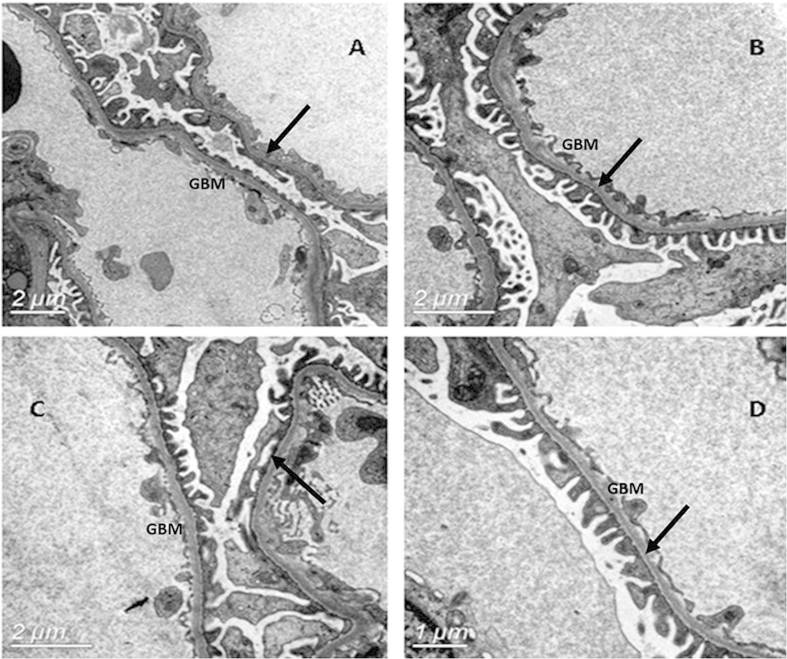
Overview Epidemiology The frequency may be approximately 5%‒9%. However, TBMN is clinically diagnosed in < 1% of the general population. Most common cause of persistent hematuria Etiology Autosomal dominant inheritance In some families, TBMN appears to be caused by mutations in: COLA4A3 → encodes the alpha-3 chains of type IV collagen COLA4A4 → encodes the […]
Goodpasture Syndrome
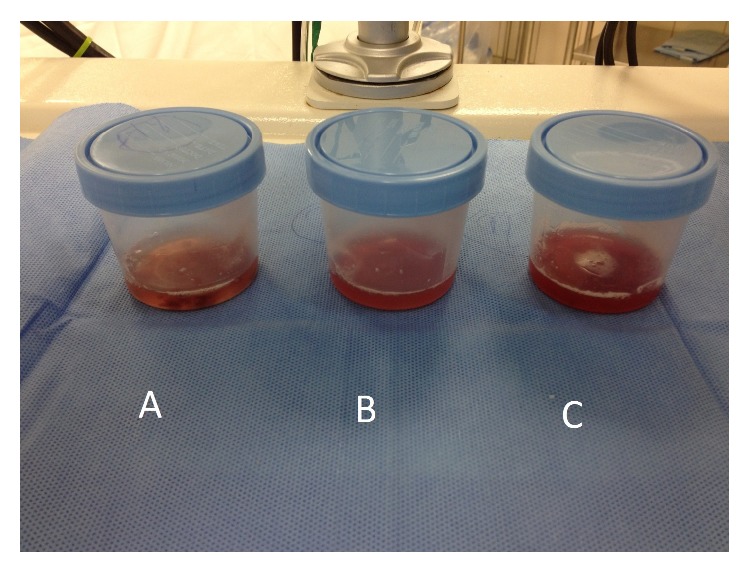
Epidemiology and Etiology Epidemiology Rare: < 2 cases per million individuals Accounts for: Approximately 15% of all cases of crescentic glomerulonephritis 1%–5% of all cases of glomerulonephritis Bimodal age distribution: 3rd decade 6th–7th decades Sex: Slight male predominance in the younger age group Female predominance in the older age group Etiology Potential genetic predisposition: HLA-DR15 (previously […]